How It Went Down by Kekla Magoon. Henry Holt. 2014. Review copy.
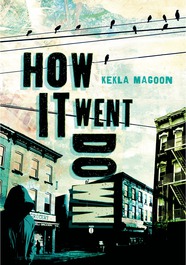 The Plot: Tariq Johnson, sixteen, dies from two gunshots fired by by Jack Franklin. Tariq is black; Jack is white.
The Plot: Tariq Johnson, sixteen, dies from two gunshots fired by by Jack Franklin. Tariq is black; Jack is white.
There are many people who know Tariq, who know Jack. Who saw them before the shooting and after. Each has a their own story to tell, about what they know.
The Good: There is an old saying, that for every two people there are three sides to their story. Their versions, and the truth.
The problem, of course, is figuring out what that truth is and is not.
Here, there are those who say that Tariq was just a teen with a chocolate bar. And others who say he had a weapon. And some that say that Jack was justified. And others who say it was murder.
How It Went Down is told in many voices, friends, family, acquaintances. It's the story of Tariq's life and death and the aftermath, but we also find out about the lives of those who in telling Tariq's story tell their own. What I like about these multiple narratives is it doesn't give any answers of what really happened. It's up to the reader to decide who is right -- but the thing is, it's clear that everyone is right. Or, rather, everyone believes that they are right in what they know, what they saw, and what they believed.
And it's not just the shooting of Tariq, and whether or not it's the self defense that Jack claims. It's also whether, as the story unfolds, Jack's claim of self defense is made in part not because of anything that Tariq did or did not do but because Tariq was a black teenager and so Jack assumed and believed things about Tariq. And along with that is how the others react to Jack's claims, including the police who release him. And then the community reaction, because a black teenager is dead and the white shooter is released.
From the start, the reader knows that Tariq is dead. Knowing that doesn't lessen the impact of this death, or feeling the sorrow and grief of his family and friends. It does make one wish "if only, if only." And while this will be a good book discussion book because it allows for the readers to say what they believe happened, it's also a good book discussion book because it allows the reader to take a closer look at their own beliefs. Who do they believe? And why?
How does one's own perspective influence their memory? What they see? And what they believe?
Amazon Affiliate. If you click from here to Amazon and buy something, I receive a percentage of the purchase price.
© Elizabeth Burns of A Chair, A Fireplace & A Tea Cozy
Viewing: Blog Posts Tagged with: henry holt, Most Recent at Top [Help]
Results 1 - 25 of 42
Blog: A Chair, A Fireplace and A Tea Cozy (Login to Add to MyJacketFlap)
JacketFlap tags: reviews, realistic, contemporary, Henry Holt, 2014, Kekla Magoon, Add a tag
Blog: A Chair, A Fireplace and A Tea Cozy (Login to Add to MyJacketFlap)
JacketFlap tags: reviews, fantasy, Henry Holt, Mary E Pearson, 2014, favorite books of 2015, Add a tag
The Kiss of Deception (The Remnant Chronicles) by Mary E. Pearson. Henry Holt & Co. 2014. Reviewed from ARC.
 The Plot: Princess Lia runs away from an arranged political marriage.
The Plot: Princess Lia runs away from an arranged political marriage.
She finds a small village to live in, finds a job and a place to live, and embraces her non-royal life.
Two men are following her: one, the jilted prince. The other, an assassin.
The Good: I'm sorry to say that I read this over a year ago, should have blogged it then, but didn't. But I loved it so much I didn't want to just say "oh, too late now."
Lia does something selfish, by running away and abandoning her obligations to family and country. But so what? Seriously. Lia isn't asking for much -- she has no say in her future, her spouse, no choice at all. All her choices have been taken away from her. So she runs. So she needs time to figure out who she is and what she wants. She needs time.
Meanwhile, there are the two following her: one, a prince who is upset about her leaving and who recognizes that the marriage is of political necessity. The other, an assassin loyal to his own and whose job is to make sure that political marriage doesn't happen. Here's the thing: while the reader knows one is a prince, one is an assassin, the reader doesn't know which of the young men we're reading about is which.
Is Lia falling for a prince or her killer? Is the prince or the assassin falling for her? I kept on going back and forth with my guess.
What else does this have? Twists! Adventures! Turns! Questions! Cliffhangers! Romance! Secrets! Betrayals! Death!
And yes..this means it's a Favorite Book of 2015.
Amazon Affiliate. If you click from here to Amazon and buy something, I receive a percentage of the purchase price.
© Elizabeth Burns of A Chair, A Fireplace & A Tea Cozy
Blog: Becky's Book Reviews (Login to Add to MyJacketFlap)
JacketFlap tags: picture books, Nonfiction, Henry Holt, picture books for older readers, library book, 2015, books reviewed in 2015, Add a tag
Winnie: The True Story of the Bear Who Inspired Winnie the Pooh. Sally M. Walker. Illustrated by Jonathan D. Voss. 2015. Henry Holt. 40 pages. [Source: Library]
First sentence: When Harry Colebourn looked out of the train window, he couldn't believe what he saw: a bear at the station!
Premise/plot: This picture book is the 'true story' of the real bear named Winnie that was eventually given to the London Zoo. The book ends by introducing readers to a young Christopher Robin who enjoys visiting Winnie at the zoo.
My thoughts: Most of the picture book takes place during World War I. You probably can't think of many picture books about World War I or set during World War I, I know I can't think of any others at the moment! Harry Colebourn is a soldier, a Canadian soldier, and the war is in the background. As an adult reader, I felt the war was rightly in the background. I'm not sure if young readers will read the book in quite the same way. Winnie, the bear, is a friend, companion, mascot, not just to one soldier--though Harry is his favorite--but to a regiment. When Harry's called to fight overseas in Europe, Winnie is left in the care of the London Zoo. An author's note fills in the details of Winnie's life after the publication of A.A. Milne's classic children's book.
Text: 4.5 out of 5
Illustrations: 4.5 out of 5
Total: 9 out of 10
© 2015 Becky Laney of Becky's Book Reviews
Blog: Becky's Book Reviews (Login to Add to MyJacketFlap)
JacketFlap tags: Nonfiction, Henry Holt, j nonfiction, library book, 2015, books reviewed in 2015, Add a tag
Beatrix Potter and Her Paint Box. David McPhail. 2015. Henry Holt. 40 pages. [Source: Library]
First sentence: Beatrix Potter was born on July 28, 1866, in London, England.
Premise/plot: David McPhail has written a picture book biography about Beatrix Potter, author-illustrator of dozens of picture books including Peter Rabbit. The book focuses on her childhood through the publication of her first few books.
My thoughts: I enjoyed this one very much. I really liked the illustrations. And I thought the text was very reader-friendly. It wasn't text-heavy. It was just the right amount of text for the target audience. Overall, a very nice biography.
Text: 4 out of 5
Illustrations: 4 out of 5
Total: 8 out of 10
© 2015 Becky Laney of Becky's Book Reviews
Blog: Becky's Book Reviews (Login to Add to MyJacketFlap)
JacketFlap tags: picture books, Henry Holt, picture books for older readers, j nonfiction, review copy, 2015, 2015 Cybils-eligible, Add a tag
Fab Four Friends: The Boys Who Became The Beatles. Susanna Reich. 2015. Henry Holt. 32 pages. [Source: Review copy]
I love the Beatles, have spent several decades loving the Beatles, so I was quite excited to read Susanna Reich's picture book biography of the fab four. She introduces each Beatle individually, starting with John, of course. As each one meets John and joins the band, his story is then told in some detail. It is a partial biography, not a full one. The book concludes circa 1963 with the Beatles just beginning to become HUGE in England. (Think Love Me Do and Please, Please Me.)
The details are age-appropriate, in case you're curious. If you're familiar with the Beatles--as a group, or as individuals--then you know that there is plenty that could have been said, could have been shared, for a mature adult audience. The book captures them at their innocent best.
I've read a handful of books about the Beatles--mainly biographies--over the years, and this one did a good job with the basics. I liked the simple approach for a younger audience. Though this one would definitely be a picture book for older readers, and not a book ideal for preschool read aloud.
The Illustrations are by Adam Gustavson. I spent time looking at each spread of this picture book, absorbing the details in the text and in the illustration. I've spent plenty of time looking at photographs of the Beatles--I had a new Beatles calendar for several years in a row. So what did I think of the illustrations? I liked them for the most part. There were one or two that I thought were practically perfect. But I couldn't really say that of each and every page. Still, I liked the illustrations overall.
If used in a classroom, this one would pair well with the first Beatles Anthology album. Students could listen to "early" recordings of the Beatles.
© 2015 Becky Laney of Becky's Book Reviews
Blog: Becky's Book Reviews (Login to Add to MyJacketFlap)
JacketFlap tags: J Fiction, J Fantasy, Henry Holt, MG Fiction, library book, MG Fantasy, 2015, 2015 Cybils-eligible, books reviewed in 2015, Add a tag
Finding Serendipity. Angelica Banks. 2015. Henry Holt. 288 pages. [Source: Library]
I enjoyed meeting Tuesday McGillycuddy and her dog Baxterr, the stars of Angelica Banks' Finding Serendipity. The novel takes place on the last day of school/first day of summer vacation. On the way home from school--she's roller skating, by the way--she stops to make a wish at a fountain. She'd never tell the wish aloud, who would? But the reader learns that the wish is that her oh-so-famous mother Serendipity Smith would finish the final novel in her oh-so-popular series. (Vivienne Small and the Final Battle.) Her father welcomes her home with baked goodies, but, Tuesday is too excited about her mother possibly finishing the series to enjoy a snack or even dinner. Her mother is upstairs in her office writing...and mustn't be disturbed. But when it becomes late--past her bedtime perhaps--the two open the door to discover an empty room and an open window. The Dad? Well, he's not worried. But Tuesday, well, she's super-worried! Where did her Mom disappear to?
Tuesday, for better or worse, decides to GO in search of her mom. And that journey starts at the typewriter her mom uses in her office. Before she knows what's happening, Tuesday's own story, her own adventure, has begun...and her oh-so-faithful dog, Baxterr is by her side, of course.
Tuesday's adventure is something....and the "world" she visits is fun in a dangerous sort of way. But I won't be sharing the details of her adventures there and who she meets... That wouldn't be nice of me at all!
I liked this one. I did. It was a quick, light read. It is a bit cutesy, I admit.
© 2015 Becky Laney of Becky's Book Reviews
Blog: Becky's Book Reviews (Login to Add to MyJacketFlap)
JacketFlap tags: series books, J Fiction, Henry Holt, MG Fiction, library book, mg historical, j historical, 2015 Cybils-eligible, books reviewed in 2015, Add a tag
Bo at Iditarod Creek. Kirkpatrick Hill. Illustrated by LeUyen Pham. 2014. Henry Holt. 288 pages. [Source: Library]
I really did enjoy the first book in the series. And I wanted to love this one just as much. But it was more of an almost book for me.
I still love Bo as a narrator. She still has a very unique voice to her. And the illustrations by LeUyen Pham are oh-so-wonderful which is probably why I like Bo so much.
In this second book in the series, Bo and her new brother, Graf, go with their fathers Jack Jackson and Arvid Ivorsen to a new community: Iditarod Creek. They go where there's work, to keep it simple. So there are new characters to meet, new opportunities and situations. In fact, there might even be a THIRD child added to the family.
The setting is unique, especially for a children's book. Historical fiction set in Alaska in 1929 and 1930. The world Bo is growing up in is probably a strange one to most readers. Bo is a six (or seven) year old girl growing up without many girls her own age, and without many ladies around in general. It's not exactly a "proper" or "traditional" upbringing. But what Bo has in abundance is LOVE and understanding. Both Jack and Arvid take time to talk with Bo, to love her, to teach her.
One word of warning this book has racial slurs, matter-of-fact, this is the way it was language. So if you're reading this aloud to young(er) children, you should know what's coming.
© 2015 Becky Laney of Becky's Book Reviews
Blog: Galley Cat (Mediabistro) (Login to Add to MyJacketFlap)
JacketFlap tags: Publishing, Facebook, Viking, Henry Holt, Vanity Fair, Buzz Books 2015, George Hodgman, Bettyville, Cathy Horyn, Kevin Sessums, Sara Bershtel, Authors, Add a tag
In 2012, author and editor Kevin Sessums shared a post that his old colleague from Vanity Fair George Hodgman had written from his hometown of Paris, Missouri, where he was caring for his mother, Betty.
Sessums introduced it, in part, by saying: \"His missives here on Facebook about his time back home with her are so beautiful. I had to share this latest one… (they) resound with such love and respect and a kind of sweet regret.\"
Portions of the story in that missive appear in Hodgman’s new book Bettyville, which will debut at #9 on the New York Times bestseller list next Sunday. Hodgman–a noted book and magazine editor who has worked at Simon and Schuster, Vanity Fair, Talk magazine, Henry Holt and Company, and Houghton Mifflin–announced it on his Facebook blog on March 18: \"This is a total thrill and unexpected. I wanted to post this here because I truly owe it to all of you. YOU MADE THIS BOOK FOR ME.\"
Writing in the New York Times, Cathy Horyn calls Bettyville, \"a most remarkable, laugh-out-loud book\" that \"works on several levels (as a meditation on belonging, as a story of growing up gay and the psychic cost of silence, as metaphor for recovery).\" When Horyn notes that he approaches memoir from a \"fairly new perspective: that of a gay son,\" Hodgman says, \"Here was this neurotic, self-centered, New York, childless gay man.\"
Horyn quotes Sara Bershtel, publisher of Metropolitan Books and a Hodgman colleague from his time at Henry Holt, who said, Bettyville suggests \"the development of a watchful gay kid. You have to watch everybody, you have to watch your parents, and you can’t show anything.\" Horyn feels that watchfulness \"made him a shrewd and witty observer.”
Hodgman told the Times that he generally wrote from 4 to 9 a.m., when his mother rose. Sometimes he would key in their chats while his mother spoke from the sofa.
\"My mother is funny and dry without knowing that she is. Together, we can make people laugh. So I had this idea of a quirky comedy team…I’m also very nostalgic about these towns…I just felt that this rural area was a real story that nobody was telling.\"
People are listening. In January, Publishers Lunch had already flagged it as a book to watch in its BUZZ BOOKS 2015: Spring/Summer edition. Amazon and Books-a-Million recently made Bettyville a Top Pick, and People named it a \"Book of the Week.\"
\"I am a believer in God in my own special way. But I think I was given this book because I came back.\"
Add a CommentBlog: American Indians in Children's Literature (Login to Add to MyJacketFlap)
JacketFlap tags: A Book of Americans, Rosemary Benet and Stephen Vincent Benet, stereotypes, not recommended, Henry Holt, Add a tag
Woah!
That is my thought as I sat down to share some photos of pages from Rosemary Benet and Stephen Vincent Benet's A Book of Americans. I have no memory of how it came to be in my house. I probably got it at a yard sale or used book store.
Anyway--it came out in 1933 from Farrar and Rinehart. As I flipped through it, I thought it'd be an interesting blog post, so I took some photos. You'll understand why I wanted to share them. They are not the reason for the "Woah!" at the top of this post.
Here's the end papers as you open the book:
Here's the first page of the table of contents:
Here's the page on Crazy Horse:
Here's some of that text from the Crazy Horse page:
The Indians of the Wild West
We found were hard to tame,
For they seemed really quite possessed
To keep their ways the same.
They liked to hunt, they liked to fight,
And (this I grieve to say)
They could not see the white man's right
To take their land away.
Now. Why did I start this post with "Woah!"?
Henry Holt reissued the book in 1987.
I'm gonna say that again. Louder.
Henry Holt reissued the book in 1987.
I can (mostly) ignore the customer reviews at Amazon ("Delightful." and "Excellent.") and of course, there's a lot to say about the illustrations and the poems, too...
But the idea that Henry Holt reissued it in 1987 floors me. Why did Henry Holt do that?! Why?
Blog: From the Mixed-Up Files of Jennifer Bertman (Login to Add to MyJacketFlap)
JacketFlap tags: Christy Ottaviano Books, Book Scavenger, Emus Debuts, Garrison Griswold, fun, games, middle grade, promotion, Henry Holt, Add a tag
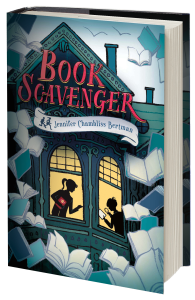 (This post is cross-posted from EMU's Debuts)
(This post is cross-posted from EMU's Debuts)So I wanted to do something fun to celebrate Book Scavenger and spread the word about its existence. What to do, what to do? That's where Garrison Griswold comes in.
 |
| Illustration by Sarah Watts |
Blog: Becky's Book Reviews (Login to Add to MyJacketFlap)
JacketFlap tags: biography, Nonfiction, Henry Holt, j nonfiction, 2014, mg nonfiction, library book, books reviewed in 2015, Add a tag
Little Author in the Big Woods. Yona Zeldis McDonough. 2014. Henry Holt. 176 pages. [Source: Library]
I expected to love this biography of Laura Ingalls Wilder. It did not disappoint even slightly. It is written for an audience ready to appreciate the Little House novels. That was a nice touch, I thought. For children who already love the original Little House books, this book is great for telling more of the whole story. Readers can see for themselves the similarities and differences between the books and her real life. There were details she left out or changed. There were periods of her life she didn't write about. Readers also get a fuller story for her whole life birth through death. Some details, of course, I'd read before, but, there were a handful of things that I'd not read before, or, that I don't remember reading before!
It is a quick read. It is an interesting read too! I love the subject, of course, I must have read the books dozens of times growing up. (Long Winter and These Happy Golden Years are my favorites in the series.) I also love the cute title of this one!!!
It is easy to recommend this one! It just says, read me! read me!
© 2015 Becky Laney of Becky's Book Reviews
Blog: Becky's Book Reviews (Login to Add to MyJacketFlap)
JacketFlap tags: YA Fiction, YA Fantasy, Henry Holt, 2014, library book, books reviewed in 2014, Add a tag
Kiss of Deception. (The Remnant Chronicles #1) Mary E. Pearson. 2014. Henry Holt. 489 pages. [Source: Library]
Kiss of Deception was an excellent fantasy. It is probably one of the best fantasies I've read all year. From start to finish, it held my attention. I really enjoyed the mystery aspect of it that held up for three-quarters of the book. The mystery being who is who.
Kiss of Deception has multiple narrators. Princess Lia is our heroine, our runaway bride. Some chapters are narrated by "The Prince," and other chapters are narrated by "The Assassin." To add to the delight OR possibly add to the confusion, there are chapters narrated by Rafe and Kaden. Readers know that Rafe could be the Prince OR the Assassin. Likewise, readers know that Kaden could be either the Prince or the Assassin. The first third of the novel focuses more on all three being on the go. The Princess has runaway, taking her maid Pauline with her. The Prince is chasing after her. The Assassin is chasing after her too. Of course, he has been hired by someone to kill her. And the Prince's motivations are vague. What happens when these two men find her hiding in a small country town? What happens when she begins to get to know these two men, Rafe and Kaden, over the course of a week or two?
Kiss of Deception was definitely suspenseful in places. There's a bit of an intrigue mixed dangerously OR delightfully with romance. Readers learn that there is so much to learn about the world in which this novel is set. There is a hint of depth to it. I wanted more--in a good way. It wasn't that this novel was inadequate, it was that what we know is so small in comparison to what we don't know. And there's this wanting to see more, know more. If fantasy worlds feel fake, then, the wanting is completely different. It isn't curiosity but frustration.
I felt this novel was well-written. I enjoyed the world-building. I enjoyed the characterization.
© 2014 Becky Laney of Becky's Book Reviews
Blog: Writing and Illustrating (Login to Add to MyJacketFlap)
JacketFlap tags: Consultation, Picture Book People, Simone Kaplan, HarperCollins, picture books, Advice, Process, revisions, article, Henry Holt, Add a tag
So for those of you who write picture books, I thought you may be interested in reading this article written by Simone Kaplan. She has more than two decades of insider experience at major publishing institutions such as Henry Holt and Company and HarperCollins Publishers, during which she’s personally accepted, edited, and rejected hundreds of children’s picture books. She knows how the words you write must spark the interest of an editor or agent. Don’t miss signing up for her free monthly newsletter filled with good information about writing picture books.

Beginning with Beginnings
by Simone Kaplan
The thing about the beginnings of manuscripts is that they are important. In terms of the overall narrative, they’re not more important than any other parts of your manuscript—say middles or endings. But because editors, agents, and children read them first, they have to show, right from the start, that what follows is worth reading.
Publishing professionals receive and read hundreds of manuscripts a month. They don’t have time to read every manuscript through to the end. They start at the beginning, so the beginning has to grab their attention, pique their interest, and indicate either that the author can write or has a good idea in order to read further. If you write a good beginning, editors and agents will read on to find out if you can develop a compelling plot, create credible characters, and sustain reader interest. If you don’t write a good beginning, the manuscript is likely to be rejected before the reader gets to the end of the first page. Just as important is the response of the ultimate “reader” of the picture book: the child who is hearing the words and who either is, or isn’t, engaged by the end of the first few spreads. Thousands of picture books line the shelves of libraries and bookstores; yours needs to engage the reader from the beginning.
So the big question is: How do you write a beginning that makes the reader—either the professional reading a manuscript or a child—want to read further?
The solution is simple to articulate but difficult to achieve. There are no rules when it comes to writing, but there are some helpful ideas. And one idea that helps answer the question posed above is that of dramatic structure. Having a structure helps anchor your narrative and gives you a way to think of plot. Plot has been analyzed and described by many critics across many genres and eras. For our purposes, though, a plot is simply a way of organizing a series of related incidents, events, and situations leading to a satisfying resolution. It’s helpful to divide the plot into three sections: the beginning, the middle, and the end. This arrangement starts with the first section: the setup, or beginning.
A good beginning does three main things:
1. It introduces your main character or characters—the who of your story.
2. It introduces the circumstances and situation, showing your reader the world in which your story takes place, and gives the reader a sense of what the story is about—the where of your story.
3. It introduces the desire/need/conflict that is going to drive the character and the story—the what of your story.
That’s why beginnings are sometimes called “setups”: they establish what the story is about, engage your reader’s interest, and make him or her want to continue to read.
A good rule of thumb is that the beginning should take up about one-quarter of the book. If you think of a standard thirty-two-page picture book and do the rough math—which allocates a single page at the beginning to the half title, a spread to the title and copyright/dedication, and a single last page of the book—you have twenty-eight pages, or fourteen spreads, to tell your story. That means the beginning should be about three to four spreads. If you’re thinking in terms of a 1,000-word-count guide, that means 250 words. When you consider that the trend these days is toward even shorter books (600 words or less), you don’t have a lot of time to set up your story and engage your reader.
It’s not easy to do, but it is possible. Since you don’t have a word to spare or a sentence to waste, you need to be economical. The most economical way of starting your book is to find a way to introduce all three elements at once. The best openings establish the situation in which the protagonist finds him- or herself combined with the dramatized action, the conflict, or the expression of a desire.
A skilled writer can establish mood and tone and write an opening that contains the premise and the situation of the whole book. You can—and should—aim to do the same. At the very least, you should set up the who, the where, and the what of your story. It’s been done in almost every good picture book you can read. And you can do it too. Examine some of your favorite picture books to see how they are set up; you can learn a lot by analyzing some good beginnings and seeing how the masters handle the challenges. Then try to apply the principles that worked for them to your own work and create beginnings full of promise and excitement.
© 2012 Picture Book People, Inc.
Simone Kaplan is a picture book lover, editor, consultant, and writing coach, and is dedicated to making you a better picture book writer. She provides creativity-enhancing, skill-building, heart-expanding support for the creators of picture books so they can write the best possible books they’re able to write.
You can find out more about her work at http://www.picturebookpeople.com, or reach her at [email protected] ro read more about working with her at http://www.picturebookpeople.com/services.html
Don’t miss signing up for Simone’s free picture book newsletter.
Talk tomorrow,
Kathy
Filed under: Advice, article, Consultation, picture books, Process, revisions Tagged: HarperCollins, Henry Holt, Picture Book People, Simone Kaplan
Blog: Becky's Book Reviews (Login to Add to MyJacketFlap)
JacketFlap tags: Books reviewed in 2012, YA Fiction, YA Fantasy, YA Romance, Henry Holt, 2012, library book, Add a tag
Shadow and Bone. Leigh Bardugo. 2012. Henry Holt. 368 pages.
The servants called them malenchki, little ghosts, because they were the smallest and the youngest, and because they haunted the Duke's house like giggling phantoms, darting in and out of rooms, hiding in cupboards to eavesdrop, sneaking into the kitchen to steal the last of the summer peaches.
I really enjoyed Shadow and Bone. I'm not sure that I loved it. But I definitely liked it. The prologue was very promising. Almost too promising. Because I'm not sure the prologue matches the rest of the novel. Readers are introduced to two young children, a boy (Mal) and a girl (Alina) who have a very close, very special bond. The novel starts when these two are all grown up. Readers learn that he has become a soldier and that she has become a mapmaker. The two are about to venture into a dangerous unknown, the unsea, the Fold. Not alone, of course, they are just two of the people taking part in this expedition. But it will change their lives, for better or worse. For in fighting for her life, for the life of her best friend and not-so-secret, secret crush, Mal, her power is revealed. She is a sun-summoner. This puts her on one path and Mal on another...and it is the start of a dangerous, exciting adventure.
I found this one entertaining; it was easy to read. The world-building isn't the absolute best I've ever read. I didn't really try to match this fantasy world with the real world, to find parallels between the fictional world and the real world in terms of legends, mythologies, etc. I've read reviews that do, that find fault with this book for getting it wrong. I didn't read the book with that in mind. I wouldn't know how to read the book with that in mind. Did I find the story entertaining? Yes, for the most part. Did I like the characters? Yes. I thought Bardugo did a good job with Alina, the Darkling, and Mal. Several other minor characters had potential as well. Did it work as a romance? Well, it had potential. The Darkling was a fascinating character, in my opinion. And Mal, well, he was heroic enough certainly. The romance didn't wow me, but, I don't have to be wowed to enjoy the novel. It's good enough if the romance doesn't annoy me.
Read Shadow and Bone
- If you enjoy fantasy novels
- If you enjoy fantasy novels with a love triangle
- If you enjoy dark fantasy with a showdown potential between good and evil
Blog: Picture Books & Pirouettes (Login to Add to MyJacketFlap)
JacketFlap tags: Poetry, Rain, Wong Herbert Yee, Spring, Henry Holt, Christy Ottaviano Books, Creative Movement, Maria's Movers, Picture Books for Dance Class, Summer Days and Nights, Who Likes Rain?, Tracks in the Snow, Add a tag
Blog: Becky's Book Reviews (Login to Add to MyJacketFlap)
JacketFlap tags: J Historical Fiction, J Fiction, Henry Holt, 2000, library book, Books reviewed in 2012, Add a tag
The Dollhouse Magic. Yona Zeldis McDonough. Illustrated by Diane Palmisciano. 2000. Henry Holt. 86 pages.
Of all the streets in town, Lila and Jane Finney like Cheshire the very best. It's not because of the large old oaks whose spreading branches arch and nearly meet in the air, creating, in spring and summer, a most beguiling canopy overhead. Nor is it the well-tended flower beds, though these are filled with an ongoing seasonal display: tulips and daffodils in spring; roses, lilies, and marigolds in summer; asters and mums in the fall. It is not even because of the way the street ends in a lush, grassy circle, in the center of which is a handsomely carved old stone fountain. No, as attractive as all these things are, what Lila and Jane love most is a house on Cheshire Street, a three-story dollhouse with real clapboard siding and a cedar shingle roof that sits in Miss Amanda Whitcomb's front window.
It all depends on your expectations. On what you want this one to be. Is that fair to a book? Well, I'm not sure it is. But it's one of those things that just happens naturally.
So The Dollhouse Magic is historical fiction for young readers. (I'm thinking second to fourth graders, though that all depends on reading levels of course.) The Dollhouse Magic is set during the Great Depression (1930s). Readers are introduced to two sisters, Lila and Jane, there are other siblings in the family, but Lila and Jane are the stars of this one. The book is about their "adventures" visiting Miss Amanda Whitcomb's dollhouse. It definitely IS an adventure for them. It's quite a thrill to be allowed to play with this dollhouse, to look at all the furniture and dolls. And the dollhouse is perhaps the main attraction at the beginning, but, the two do become very friendly with this old woman. They enjoy the treats she shares. Perhaps they don't realize just how special she is...until...well, you can guess what happens next.
What I didn't quite like about The Dollhouse Magic is how manipulative it is. Yes, I know that people die. I know that is natural. And yes, I know that people even die on Christmas Eve. But. Why oh why oh why does it have to happen in this happy little book...especially without any warning. It's not like we see Miss Whitcomb getting weak or sick. It just didn't seem fair or right.
I would have HATED this ending as a kid. I would have. I'm not all that fond of it as an adult. So my question for you is this... if a character is going to die in a book, do you want some foreshadowing or hinting along the way? Do you want or need time to prepare? Or do you like being surprised? Should sad books come with warnings?
© 2012 Becky Laney of Becky's Book Reviews
Blog: The Excelsior File (Login to Add to MyJacketFlap)
JacketFlap tags: YA, tolerance, middle grade, henry holt, jo knowles, 11, sexual orientation, Add a tag
by Jo Knowles Henry Holt 2011 When fifteen year old Pearl (aka Bean) loses her grandfather, the one person she felt knew and loved her best, a whole world of secrets open up that forces her to question everything she's ever believed about her world. Pearl, who goes by the nickname Bean, and her best friend Henry are self-separated outcasts. Henry's mom Sally spends her days watching
Blog: Galley Cat (Mediabistro) (Login to Add to MyJacketFlap)
JacketFlap tags: Jobs, Random House, Scholastic, Henry Holt, Add a tag
This week, Quirk Books is hiring not one, but two new staff members — an adult trade acquisitions editor and a children’s book editor. Meanwhile, Henry Holt is on the hunt for a senior publicist, and Random House has an opening for a senior designer in its children’s book department. Get more information on these jobs below, and check out additional publishing opportunities on mediabistro.com.

- Acquisitions Editor – Adult Trade Quirk Books (Philadelphia, PA)
- Children’s Book Editor Quirk Books (Philadelphia, PA)
- Senior Publicist Henry Holt (New York, NY)
- Senior Designer – Children’s Books Random House (New York, NY)
- Supervising Editor Scholastic (Watertown, MA)
For more job listings, go to the Mediabistro job board, and to post a job, visit our employer page. For real-time openings and employment news, follow @MBJobPost.
New Career Opportunities Daily: The best jobs in media.
Add a CommentBlog: Becky's Book Reviews (Login to Add to MyJacketFlap)
JacketFlap tags: YA Fiction, YA realistic fiction, road trip, Henry Holt, 2009, review copy, Add a tag
The Miles Between. Mary E. Pearson. 2009. Henry Holt. 272 pages.
I was seven the first time I was sent away. This raised eyebrows, even among by parent's globe-trotting friends, and I was brought back home in short order. Rumors are embarrassing, you know? A nanny was employed, but that only partially solved their problem. I was still in the house. I was seen and heard. When I turned eight years old, it seemed reasonable enough to send me off again. And they did. They never kept me at any one place for long.
Des (Destiny) Faraday, our narrator, doesn't have many friends. Then again, she doesn't want any friends. Readers meet her on October 19th, a day that Des has come to dread year after year, though readers aren't quite sure why. Wanting to take control of her life, Des rips the page right off her calendar. Things seem to be off on a shaky start. Until she meets a stranger. Until she asks for one fair day in the universe. Until she finds a car with a running engine. Until she finds three companions that need escape from Hedgebrook Academy--a boarding school--just as much as she does. Can one day of freedom on the road change lives? Perhaps.
I enjoyed The Miles Between. It was emotional--very emotional in places. Though the novel only covers one day, there is so much growth and development. Destiny is changed by this day--and it's a wonderful thing to see. And the writing is lovely. I would compare it to Jellicoe Road by Melina Marchetta, but I think The Miles Between is an easier read, a less-intimidating read.
There are so many different ways of being good. It's all about perspective. (35)
The world before us is a postcard, and I imagine the story we are writing on it. (45)
© 2011 Becky Laney of Becky's Book Reviews
Blog: Becky's Book Reviews (Login to Add to MyJacketFlap)
JacketFlap tags: J Fiction, J Fantasy, Henry Holt, J Mystery, 2009, Add a tag
The Witch's Guide to Cooking With Children. Keith McGowan. 2009. Henry Holt. 192 pages.
I love children. Eating them, that is. I've eaten quite a few children over the centuries. You may wonder where I get them all. The answer is: I get them the traditional way. From parents, of course.
The book begins with a little excerpt from Fay Haladerry's "How to Cook and Eat Children." This mystery novel stars two children--an eleven-year old boy, Solomon, an eight-year-old girl, Connie. These two first get suspicious of their new community when they see a local dog chewing (or perhaps burying?) a human bone. Of course, they don't know right then and there that it is human. But a trip to the library soon has these kids convinced that there is something strange about one of their neighbors, a woman named Fay Haladerry. Readers, of course, know more than our hero and heroine for most of the novel. For they realize early on that a) this woman is a witch--the witch--from Hansel and Gretel and b) that Sol and Connie's parents have it in for them. They see the first few failed attempts. They have a better idea of who to trust and who not to trust.
This book has an interesting premise, a playful premise. Throughout the book, readers get a glimpse into this witch's book. And these scenes may prove the highlight for readers interested in this twisted fairy tale. But, for me, the novel lacks substance when it comes to characterization. The story in many ways seems one-dimensional. Sol and Connie don't deserve to be cooked and eaten--not by any stretch of the imagination--but they do lack the depth needed for this reader (this adult reader) to really care about them as individuals. The book lacks complexity in a way. Beyond the premise, beyond the playful twist to a traditional fairy tale, it isn't as great as the book cover might suggest.
© 2011 Becky Laney of Becky's Book Reviews
Blog: 100 Scope Notes (Login to Add to MyJacketFlap)
JacketFlap tags: Kid's Books, Macmillan, review, Children's Books, Reviews, Picture Book, Featured, Henry Holt, Add a tag

The concept of a small protagonist making a mark on the big world is a children’s lit mainstay. It makes sense – there are few situations children can better relate to than being surrounded by those that are older and bigger and wanting to do something conspicuous. Tom Lichtenheld’s charming Cloudette ably enters this territory, and will likely garner fans big and small. But mostly small.
As her name suggests, Cloudette is a cloud of the most diminutive proportions. Clearly, there are perks to being small, but Cloudette reaches a point where she wants to do important things, like make rivers flow and waterfalls fall. She tries to help the fire department, garden center, and car wash, but is turned away at every stop. When a storm drops Cloudette in an unfamiliar place, she finally finds where her modest services can make a difference – a small, dried-up pond.
While third-person narration guides the narrative, dialog intermittently appears in smaller font, sometimes adding comic relief and other times filling out the story.
For a book about a cloud, these illustrations are certainly sunny. Ink, pastel, colored pencil, and watercolor are used to create bright, clean artwork. There are some two page spreads here that absolutely stand out as some of Lichtenheld’s best work. For example:
And when the story reaches its climax and our heroine finally lets the rain fall, the view shifts, requiring the reader to turn the book to the side (think Tops & Bottoms) to get the full effect – a nice touch.
It isn’t cloying, it isn’t didactic – it’s just a little book about self determination that works. In the end, Cloudette is perfectly pleasant, and that’s not a bad thing to be.
Review copy from publisher.
Watch the book trailer for Cloudette:
Visit Tom Lichtenheld’s website.
Find this book at your local library with WorldCat.
Blog: Young Readers (Login to Add to MyJacketFlap)
JacketFlap tags: picture books, Christmas, 2006, Henry Holt, library book, Add a tag
This Is The Stable. Cynthia Cotten. Illustrated by Delana Bettoli. 2006. Henry Holt. 32 pages.
This is the stable, dusty and brown,
in a quiet corner of Bethlehem town.
This is the star whose light shown down
on the quiet stable, dusty and brown.
This is the manger, filled with hay
to feed the animals sheltered away
from the chilly night when the star shone down
on the quiet stable, dusty and brown.
I liked this one. I didn't quite love it. But I liked it. I liked the poetic concept of it--the framework of it. I thought it worked for the most part. I also enjoyed the illustrations.
© Becky Laney of Young Readers
Blog: Barbara Bietz (Login to Add to MyJacketFlap)
JacketFlap tags: Henry Holt, Margarita Engle - Tropical Secrets - Sydney Taylor Book Award Winner for Teen Readers, Add a tag


Margarita Engle in a multi-award winning author and poet. Her novel-in-verse, Tropical Secrets (Henry Holt) was honored with the Sydney Taylor Book Award for Teen readers. The unusual topic of the plight of Holocaust refugees is told from the perspective of several characters, each with a distinct voice. Engle’s evocative language in this beautifully crafted story. The main character, Daniel, is a young refugee who hopes to find his parents, but his sense of despair and loneliness as he arrives in Cuba is overwhelming. This breathtaking book pays homage to refugees of Cuba and those who supported them. Not only will readers learn about a little discussed historical event, they will fully engage in a beautifully told story whose characters resonate long after the last page is read.
Margarita spoke passionately about her work when accepting her award at the Association of Jewish Libraries Convention. I'm delighted to share her thoughts about writing Tropical Secrets.
What inspired you to write Tropical Secrets?
I was moved by the image of refugee children traveling alone, without knowing what to expect. During the late 1930s, when German ships filled with Jewish refugees were turned away from New York and Toronto, they anchored in Havana Harbor. Despite turmoil and tragedy, most of the refugees were granted asylum. Cuban teenagers and American Quakers volunteered to teach them Spanish. I visualized music as common ground for young people who cannot yet speak the same language.
My personal connection to the story is found in my own family history. My father is an American artist of Ukrainian-Jewish ancestry. He traveled to Cuba after seeing National Geographic photos of my Cuban-Catholic mother's hometown, Trinidad de Cuba. They met on Valentine's Day, 1947, at a colonial palace in Trinidad that was being used as an art school (It is now El Museo Romántico, the Museum of Romantic Art., and the entire town of Trinidad, Cuba, is now a UNESCO World Heritage Site.) Even though my parents could not speak the same language, they passed drawings back and forth to communicate. Sixty-two years later, they are still married, despite all the differences in their cultural and religious backgrounds. Love conquers all!
How did you learn about the history of Jewish refugees in Cuba?
A long time ago, I read about the St. Louis, a ship that, tragically, did not receive asylum. It was turned away from Cuba, and returned to Europe. Many of those refugees perished in concentration camps. Years later, Tropical Diaspora, a nonfiction study by Robert M. Levine, gave me a better understanding of that era in Cuba. I felt haunt
Blog: 100 Scope Notes (Login to Add to MyJacketFlap)
JacketFlap tags: Picture Book, Featured, Henry Holt, Macmillan, Reviews, Add a tag

The Village Garage
By G. Brian Karas
Henry Holt
ISBN: 9780805087161
$16.99
Grades K-2
In Stores
Quick test: Name a picture book about city workers. Having trouble? Me too. The men and women who keep our towns running smoothly are indeed a rarely represented subject in the children’s lit world. The Village Garage is notable for addressing this topic, and doing a fine job in the process. Simplicity well executed.
The plot here is the changing of the seasons. The mood, sunny. The Village Garage isn’t a story, as much as snapshots of events that occur during the course of a full year.
It’s Spring and that means the workers at the Village Garage are busy cleaning up.
Using an assortment of diggers, bulldozers, road stripe painters, and wood chippers, city employees tackle the tasks that enable the town to function. From collecting leaves and filling potholes to bridge repair and snow removal – each season brings a new challenge.
Let’s talk artwork. I like it. Using gouache, acrylic, and pencil Karas deftly mixes childlike, angular elements with more detailed three dimensional objects and vehicles. The result is easy on the eyes and a nice match for the simplicity of the text.
A book on a subject that doesn’t get much pub. A great pick for teaching the idea of community. Cool machines. What we have here is a success.
Review copy from publisher.
Find this book at your local library with WorldCat.
Blog: Becky's Book Reviews (Login to Add to MyJacketFlap)
JacketFlap tags: YA Fiction, slavery, YA Historical Fiction, J Historical Fiction, J Fiction, Henry Holt, verse novel, 2010, library book, Add a tag
The Firefly Letters: A Suffragette's Journey to Cuba. Margarita Engle. 2010. Henry Holt. 160 pages.
I absolutely loved The Firefly Letters. I found it so amazing, so beautiful, so right. This isn't the first Margarita Engle novel I've read--she writes verse novels set in Cuba; all historical. (I've read The Poet Slave of Cuba, The Surrender Tree, and Tropical Secrets.) But I must admit that this one is definitely my favorite so far.
The Firefly Letters is told in verse through three narrators--primarily. Cecilia, a young slave woman still mourning her lost home, her lost family. Elena, the daughter of a wealthy slave owner. Fredrika, a Swedish woman, far from home and on a mission. How are these three connected? How do their stories connect? Fredrika is staying--as a guest--at Elena's home. Cecilia is her translator--she's a slave that has learned to speak English, a valuable asset. Why is Fredrika in Cuba? What brings her around the world? She's a writer. And her mission is to write about Cuba--to write the truth--which means shedding light on the evils of slavery. Her mission brings her into close contact with all sorts of people. How will knowing Fredrika change these two young women? Will Frederika's strange, outlandish ideas of freedom, of equality, make an impact?
This story has staying power. Here is one of my favorite poems--narrated by Cecilia.
Imagine my nervousnessThe book is based in part on the life of Fredrika Bremer.
having to translate while Fredrika
scolds the schoolmistress
for keeping girls in class
only one hour per day
and for teaching them nothing
but embroidery, lacemaking,
and saints' lives
while boys study all day long
learning mathematics and science.
Elena looks so astounded
sitting in her classroom,
surrounded by giggling girls
in silk dresses with lace ruffles,
while Fredrika scolds and I translate,
all the time thinking
that one hour of school
is more than any slave girl
can hope to receive in a lifetime. (61-62)
© Becky Laney of Becky's Book Reviews
View Next 16 Posts



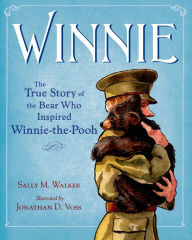



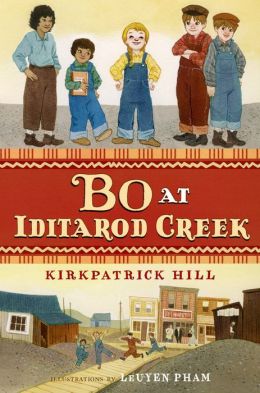



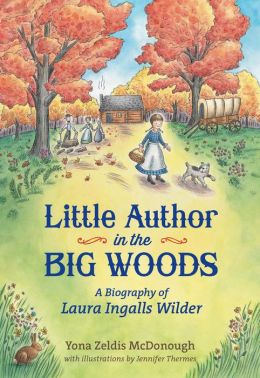

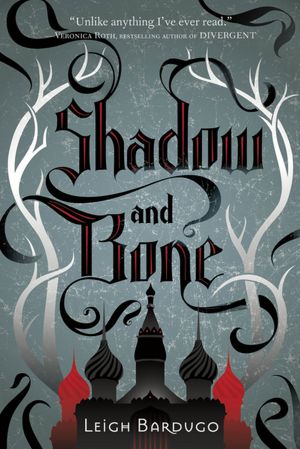

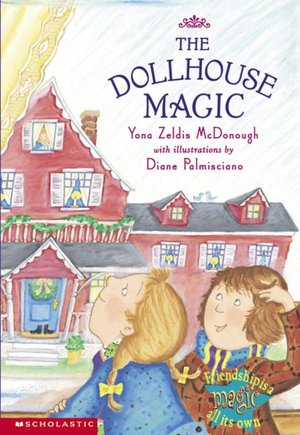


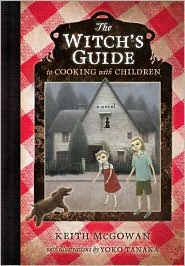
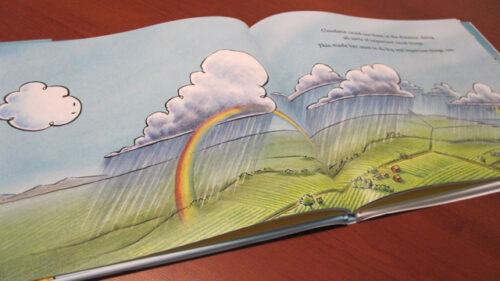


This is wonderful info. Thank you, Kathy and Simone!
I met Simone at a SCBWI conference a few years back. A lovely lady, and not just a ‘former editor’. She also ran her own imprint at Harper’s for awhile – Harper’s Growing Tree – where she published some wonderful and, I thought, very exceptional books. Apparently, they didn’t earn the monetary success they deserved, or something. I was very disappointed to see them disappear!
Hi Simone,
I recently had a PB critiqued and was told the main character wasn’t likeable. I had concentrated so much on the what and where that I hadn’t developed the who. Thanks for your advice on beginnings. Back to the drawing board.
Wonderful post! I’m sending the link to friends on the 12x Facebook page. Thanks, Kathy and Simone.
Thank you for a great post
Simone is smart, insightful and enthusiastic. Her direct, constructive questions have inspired and guided me beyond measure. I can’t say enough positive things about a consultation with Simone!
Hmmm, this gives me food for thought. I am going to rewrite the beginning of one of my stories following this advice.